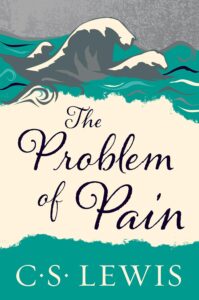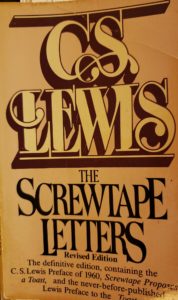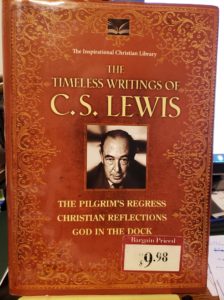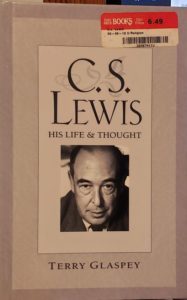
One of my life goals is to read everything that C.S. Lewis wrote. I’m a long way from meeting that goal, but inching along, book by book, essay by essay, article by article. I’m sort of going in order that the books were written—though not exactly. I’m putting off reading his fiction, the space trilogy, in favor of non-fiction. I may not stick with that, but that’s what I’m doing right now.
So, after finishing and reviewing my last book, I decided it was time for a C.S. Lewis book. The next one in order was The Problem of Pain, his 1940 book, written by request, to help explain to the common man what Christianity was all about. The world was at war—at least Europe was , so Lewis took up the challenge. Thus this was his first book written on what we call Christiam apologetics, a fancy word for defense of Christianity.
Alas, I struggled with the book, much as I did the first two or three times I tried to read Lewis’s later book Mere Christianity. Lewis lost me early on when he mentioned the “Numinous”. Here is, I think, his first reference to it.
In all developed religion we find three strands or elements, and in Christianity one more. The first of these is what Professor Otto calls the experience of the Numinous.
Huh? What the heck is a Numinous?
Lewis took a long paragraph to explain what Numinous was, but this brought no clarity to me. Since this was in the Introduction, it seemed, as I read, that grasping what that meant perhaps was essential to understanding the whole book. Since I didn’t understand it, I suspect it caused me to partially shut my mind off. I read the rest of the book, but truthfully I didn’t comprehend what I was reading.
Alas, I never really recovered from the partial mind shutdown. I say that to my shame. I know this is Lewis’s way, to bring up terms and -isms in a shorthand way, expecting his less-well educated audience to somehow grasp the concept. I kept feeling that in Mere Christianity, and in a very deja vu kind of way with The Problem of Pain.
So, how do I rate this book, is it a keeper, and will I ever read it again? 3-star, yes, and yes. I think I really need to understand this to understand Lewis. I’m sure there’s good stuff in it, stuff that will help me in my Christian walk. But I won’t get back to this very soon. It’s on to the next book, whatever that is.








